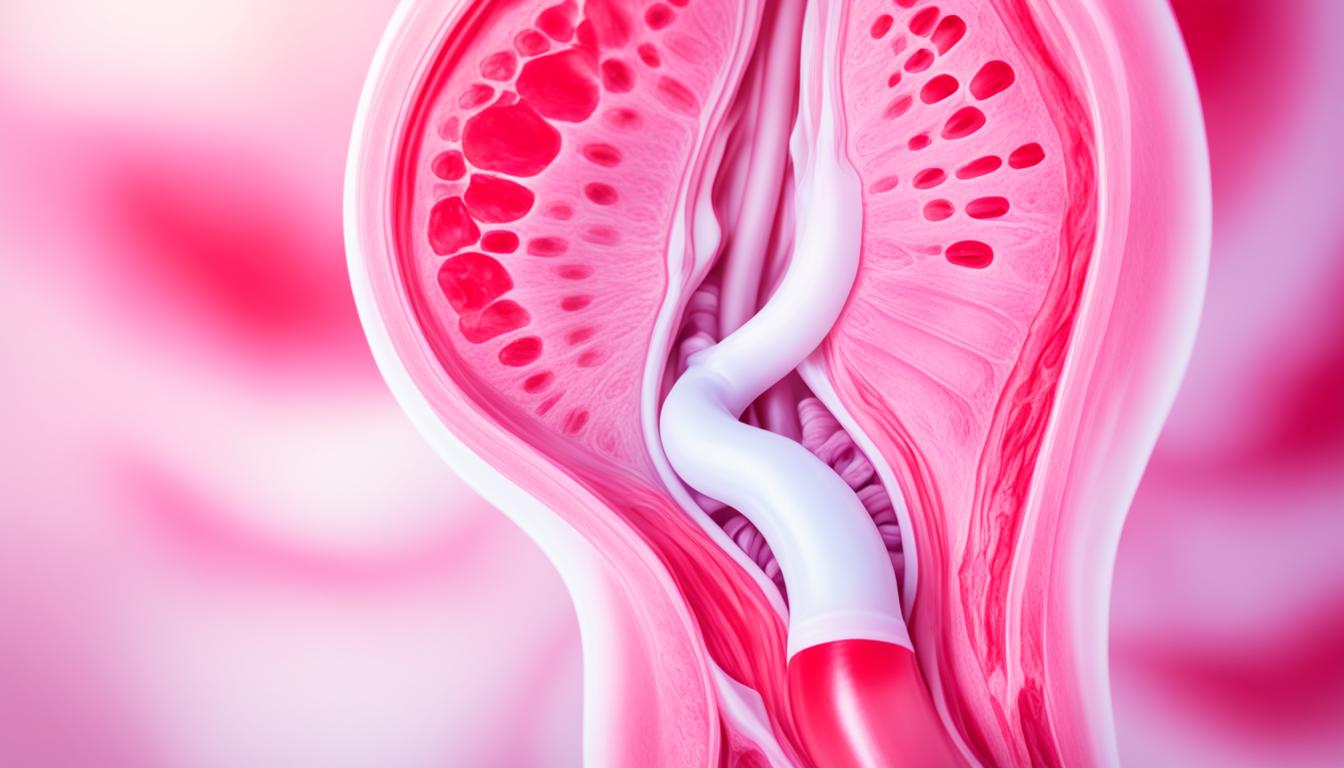Pelvic floor disorders, like prolapsed uterus, can really change someone’s life. They often happen when the pelvic muscles weaken or the endopelvic fascia tears. This usually comes from giving birth. Signs of a prolapsed uterus may be changes in the vagina, issues with going to the bathroom, and not feeling good during sex.
Traditional ways to treat this, like physical therapy or surgery, don’t always work well. But, there’s hope in stem cell therapy. Stem cells can help heal and regrow damaged tissues. This could be a great new approach for fixing the pelvic floor.
Researchers have looked at stem cell therapy for issues like urine or bowel leaks. They found it to be safe with little harm. Yet, more big studies are needed to know if it truly helps people with pelvic floor problems, including prolapsed uterus.
Key Takeaways:
- Pelvic floor disorders, such as prolapsed uterus, can really lower your quality of life.
- Weak pelvic muscles and torn endopelvic fascia are big reasons for a prolapsed uterus.
- Signs might be changes in how the vagina feels, issues with using the bathroom, and discomfort during sex.
- Old ways of treating prolapsed uterus sometimes don’t do enough, pushing for new solutions like stem cell therapy.
- Stem cells have the power to help tissue grow back and heal, showing promise for pelvic floor issues.
Advanced Stem Cell Therapy for Prolapsed Uterus
Scientists are looking into using advanced stem cell therapy to treat a prolapsed uterus. They’re especially interested in endometrial stem cells (eMSCs) applied in a special hydrogel right after giving birth. These cells are good at healing and growing new tissue, which helps with problems like a prolapsed uterus.
First looks at this therapy are positive. It seems to work for issues such as stress incontinence, anal leaks, and vaginal prolapse. It uses stem cells from the uterus’s inside, with aloe vera’s help, to fix damaged pelvic areas.
This type of stem cell treatment could potentially be a big deal for treating prolapsed uteruses. It offers a way to heal without needing big surgeries later. This means a safer, easier path for women with this problem.
Promising Results from Animal Models
Tests on animals have been key to seeing how well this stem cell therapy works. They’ve shown that stem cells can fix and grow new pelvic tissue. These findings are important for moving this treatment closer to helping people.
The Potential Benefits of Stem Cell Therapy
Stem cell therapy has big possible benefits for prolapsed uteruses:
- Promoting tissue regeneration: It helps damaged pelvic tissue regrow, possibly fixing prolapse effects.
- Reducing the need for invasive surgery: It might lessen or stop the need for surgeries, cutting risks and recovery time.
- Improving quality of life: Treating a prolapsed uterus well can make a major difference, easing issues like pain and leaks.
As we keep learning about this treatment, it’s vital to run more tests. These should check how safe and lasting the benefits are. By doing this work, we’re paving the way for better care for women with pelvic problems.
| Treatment Approach | Traditional Treatment | Stem Cell Therapy |
|---|---|---|
| Regeneration of pelvic tissue | Limited | Promising |
| Invasive surgical procedures | Commonly required | Potentially reduced or eliminated |
| Risks and complications | Possible | Minimized |
| Recovery time | Long | Potentially shorter |
Understanding Pelvic Prolapse: Causes, Symptoms, Treatment Options, and Prevention
Pelvic prolapse happens when the uterus, bladder, rectum, or vaginal walls drop down in the pelvis. This happens because the muscles and tissues that normally hold them up weaken. Girls and women of all ages can experience this. It is usually more common after menopause. There are different types of pelvic prolapse. These include uterine prolapse, cystocele, rectocele, and vaginal vault prolapse.
Causes of pelvic prolapse include childbirth, getting older, and health conditions such as being very overweight. The symptoms can be different for each person. Some common signs include feeling like something is bulging in your pelvis, pain or pressure in your vagina, leaking urine, and lower back pain.
If a doctor suspects pelvic prolapse, they will do a health history and a physical exam. They might use imaging tests or special checks of the pelvic muscles. Treatment varies. For some, doing special exercises, changing their lifestyle, or using a pessary (a support device) might be enough. Others might need surgery to fix the problem.
To help prevent pelvic prolapse, staying at a healthy weight is key. Doing exercises for the pelvis regularly, not lifting heavy things, and not smoking are important. If you already have a health condition that might make you more likely to have pelvic prolapse, managing it well can help.

